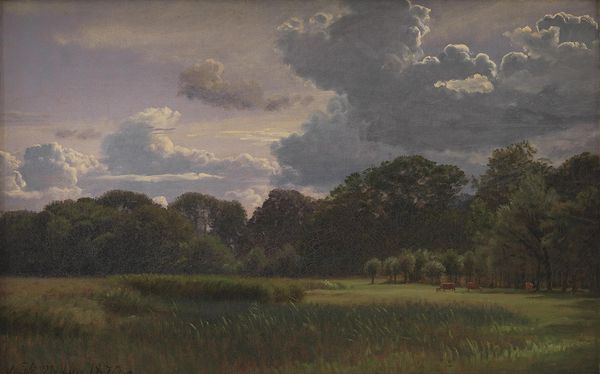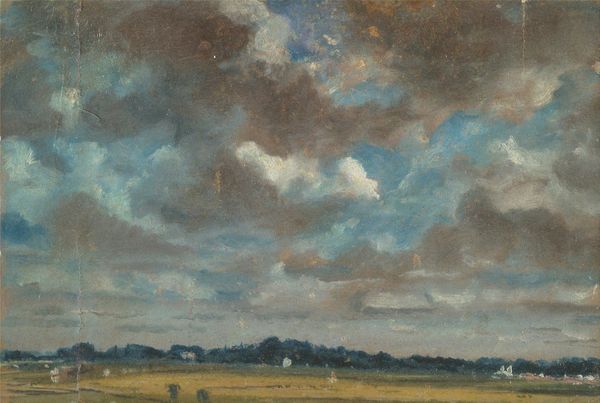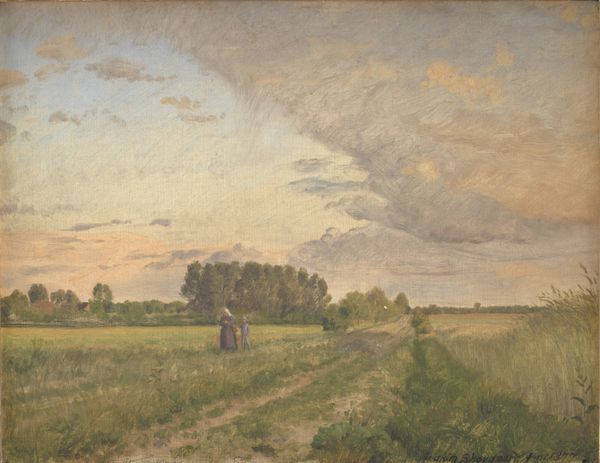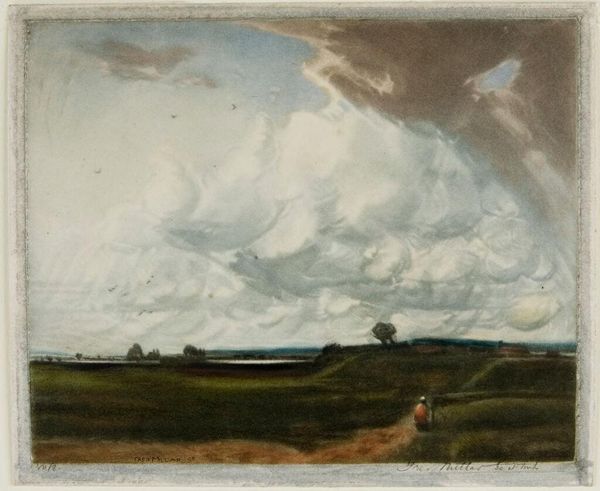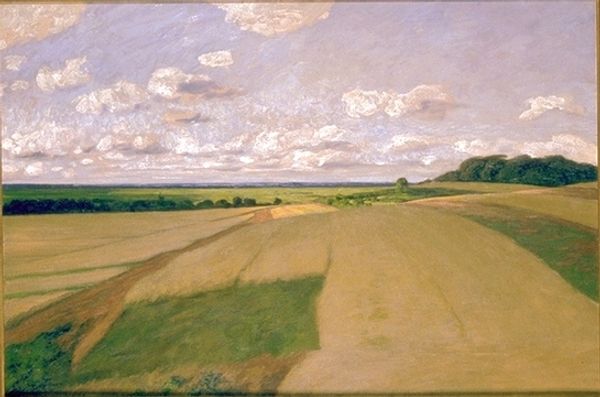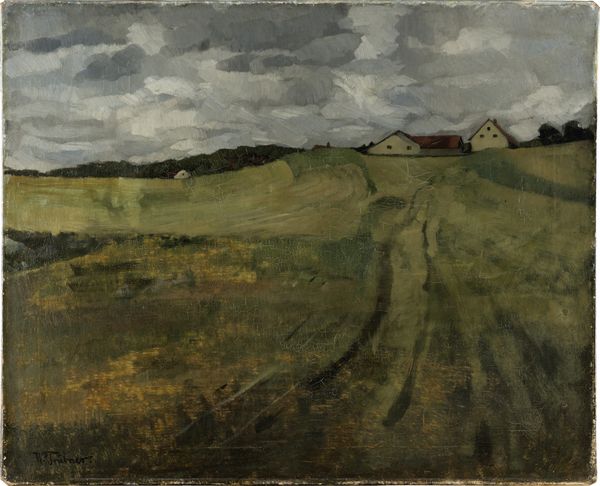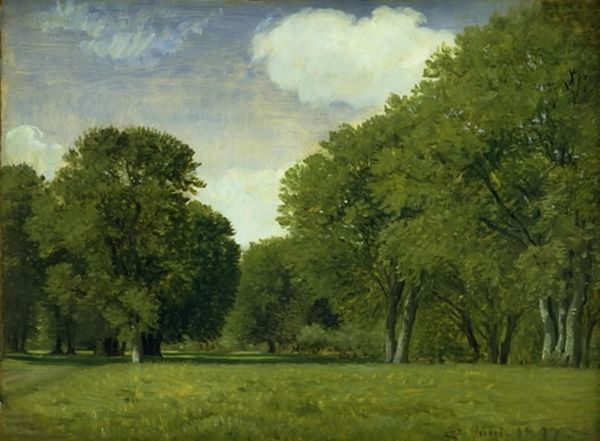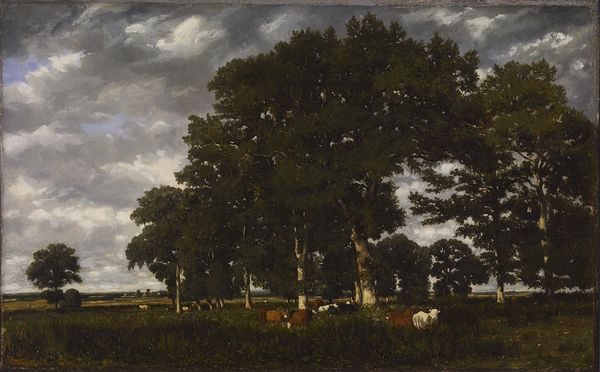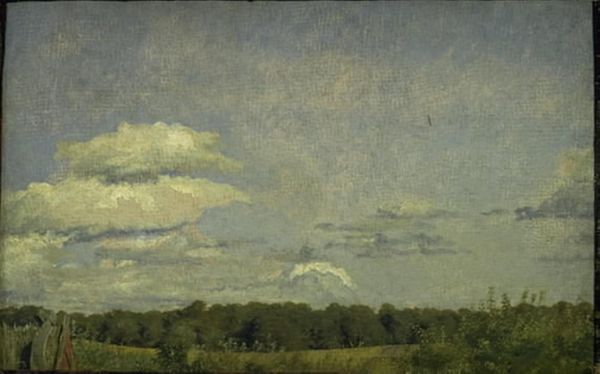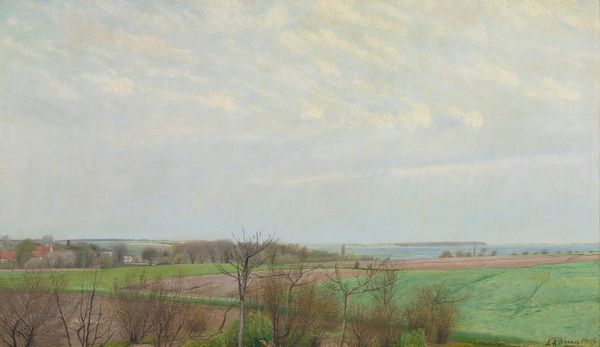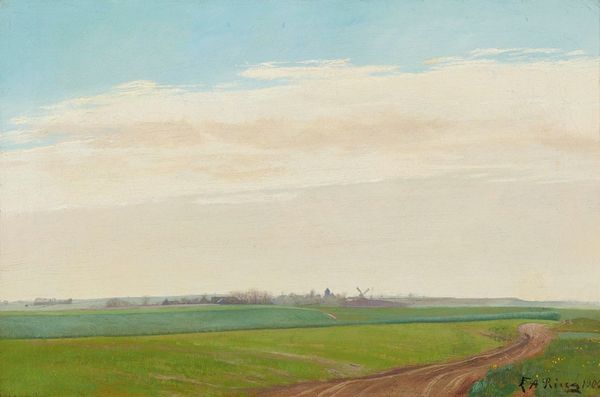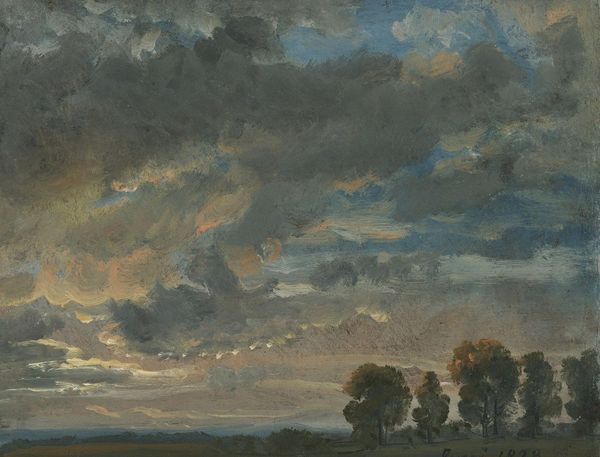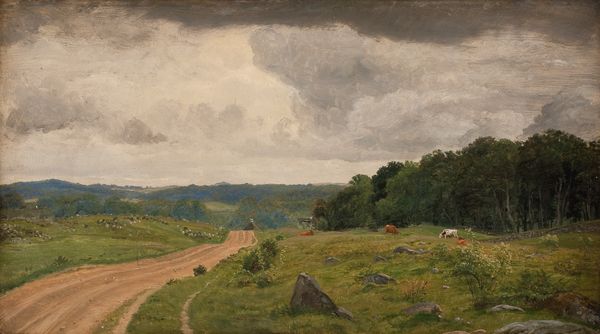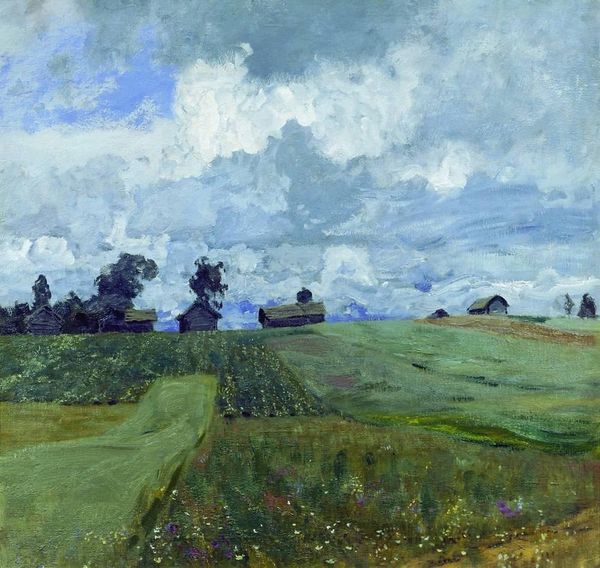
canvas
#
vast and haze
#
natural tone
#
countryside
#
nature
#
canvas
#
nature heavy
#
watercolour bleed
#
watercolour illustration
#
watercolor
#
mist
#
shadow overcast
Dimensions: 22 cm (height) x 30.5 cm (width) (Netto)
Editor: We’re looking at "Landskab i gråvejr," or "Landscape in Grey Weather," a canvas painting by Frants Henningsen, likely created sometime between 1865 and 1908. The subdued palette gives it a somewhat melancholic feel, almost like a scene from a dream. What stands out to you about this piece? Curator: What I find particularly compelling is how the artist uses the landscape, specifically the grey weather, to subtly comment on the rural experience of the time. Paintings like this gained popularity because they visualized, in ways that were accessible to a broader public, what rural life looked and felt like in places like Denmark. Consider how art institutions were starting to exhibit works that resonated with burgeoning national identities and the lives of everyday citizens. What role do you think representations of "nature" played in the public imagination back then? Editor: That's interesting, I hadn’t thought about the socio-political context. I guess seeing this landscape as relatable or representative of Danish identity would depend on *who* was viewing it. For someone in a city, perhaps the countryside seemed romantic, whereas, for someone living rurally, it may have been a different experience? Curator: Exactly. And how do you think institutions showcasing idealized or realistic-seeming landscape paintings shaped public opinion and possibly even policy towards rural areas? This image has been carefully composed to speak to certain sentiments. Look at the solitary figure on the road. What do you make of them? Editor: The solitary figure does bring a sort of human scale to the vast landscape, highlighting both the connection and disconnection between humans and nature. It makes you wonder about her life. Curator: It does indeed. Perhaps the artist hoped to elicit empathy or reflection on social and economic realities. Paintings like this weren't just about pretty scenery; they were deeply intertwined with the politics of imagery and representation. Editor: This has really changed my perspective. I will be looking at landscape art much differently from now on. Curator: I am delighted to hear this and to have offered a fresh perspective. Thank you for exploring the landscape's hidden dialogues with me!
Comments
No comments
Be the first to comment and join the conversation on the ultimate creative platform.
